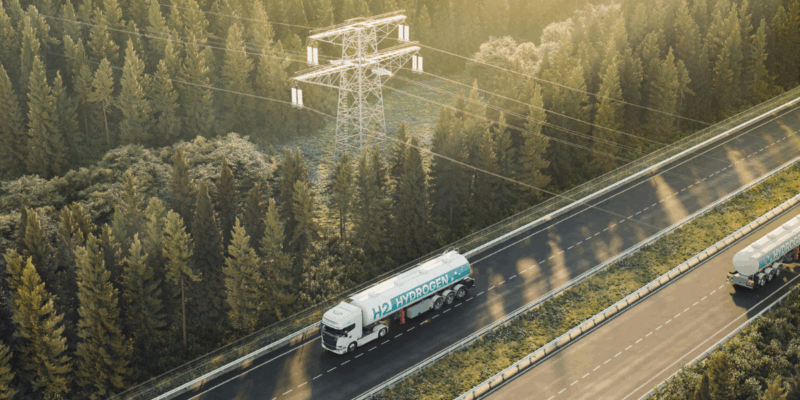Green hydrogen is gaining growing interest and demand across the globe as industries look to this energy source as a potential solution for industrial decarbonisation, and one of the ways to facilitate the delivery of 2050 net-zero ambitions. Green hydrogen is a clean energy carrier that can help decarbonise sectors that are hard to electrify and is produced through electrolysis powered by renewable energy sources. Ahead of the upcoming Hydrogen Scotland Conference, taking place in Glasgow 28-29th October, it is important to consider the opportunities and challenges of green hydrogen as industry leaders come together to focus on how Scotland can grow its hydrogen economy.
Large-scale hydrogen projects are currently being developed across Scotland, including the hydrogen-based energy hub in the decommissioned nuclear power station at Chapelcross and the Kintore Hydrogen Project in Aberdeen. It is anticipated that more hydrogen projects will follow, with Scotland currently targeting 25GW of renewable or low-carbon hydrogen production by 2045 – this has the potential to meet approximately 80% of Scotland’s current energy needs and support over 300,000 jobs.
The opportunities
Hydrogen may play a significant role in Scotland’s Food and Drink sector. Many distilleries are facing challenges to decarbonise their operations – whisky distilleries are now investigating the use of hydrogen to heat stills, with Glen Garioch Distillery announcing that it successfully laid down whisky produced from hydrogen-heated stills.
Hydrogen is also being considered as a solution for reducing carbon emissions in the transport sector. Earlier this year, Loganair announced plans to deliver the world’s first hydrogen aircraft route between Orkney and the Scottish Mainland. Trials are also underway in Orkney for the world’s first hydrogen-powered ferry.
The Scottish Government’s Hydrogen Policy statement has also outlined hydrogen’s potential in decarbonising chemical production including ammonia and methanol. In August, plans for a new project in Shetland using hydrogen to support the decarbonisation of the of fertiliser production was announced.
Hydrogen is being considered as an alternative or supplement to natural gas for heating. Last month the UK Government closed its consultation on blending hydrogen into the UK’s national gas network, with the Government response to the consultation expected next year. In Fife, the H100 trial, which uses green hydrogen for heating and cooking in homes instead of natural gas is underway. It is hoped this trial could decarbonise 300 homes while using some of the existing gas infrastructure.Some experts believe Scotland could become a major producer of green hydrogen. When the grid in Scotland is unable to handle the volume of renewable energy being generated, the surplus renewable energy could be used to produce green hydrogen.
The challenges
There are some challenges to increasing the utilisation of hydrogen in Scotland. Firstly the cost – it can be very expensive to produce green hydrogen. The lack of dedicated hydrogen pipelines and storage facilities add to the overall costs. However, the Energy and Resources Institute predicts that the cost of producing green hydrogen will fall by 50% by 2030.
Securing funding for hydrogen projects is also challenging, partially due to UK’s competitive Hydrogen Allocation Rounds, raising concerns that insufficient investment could hinder Scotland’s hydrogen leadership.
Hydrogen faces challenges before it can be widely adopted for industry, transport and heat in Scotland, but its potential is clear. Backed by £2.3 billion in UK Government support green hydrogen – powered by Scotland’s abundant renewable resources – could play a key role in powering Scotland in the future.
*This article originally featured in The Scotsman on 13th October 2025






